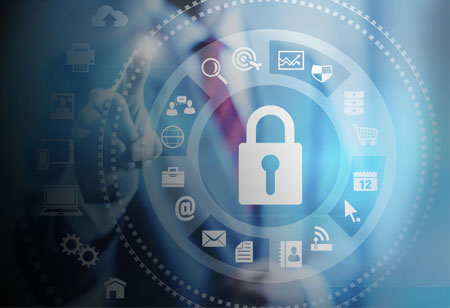THANK YOU FOR SUBSCRIBING
Transforming Cyber Risk Posture Through Gamified Learning
Gamification transforms ineffective cybersecurity training into engaging, interactive experiences, fostering a resilient security culture and addressing human error in the APAC region’s evolving cyber threat landscape.

By
Apac CIOOutlook | Friday, September 12, 2025
Stay ahead of the industry with exclusive feature stories on the top companies, expert insights and the latest news delivered straight to your inbox. Subscribe today.
Fremont, CA: The traditional approach to cybersecurity training—relying on lengthy presentations, generic videos, and static PDFs—has mainly proven ineffective in preparing employees to counter today’s sophisticated threats. In the fast-paced and diverse Asia-Pacific (APAC) region, where cyber risks are escalating, this outdated model fails to build the resilient "human firewall" organizations critically need. Gamification offers a powerful solution by applying game-based mechanics and design principles to non-game environments, turning mandatory training into an engaging, interactive, and practical learning experience. More than just making training enjoyable, it strategically addresses one of the most significant vulnerabilities in cybersecurity: human error.
How Gamification Fosters a Security-First Culture
Gamified training directly addresses key challenges in cybersecurity education by harnessing psychological motivators and game-based elements to create a more engaging and practical learning experience. This approach is particularly impactful in the APAC region, where a digitally native workforce is already accustomed to interactive and immersive experiences. By incorporating points, badges, leaderboards, and rewards, gamification increases employee participation and fosters healthy competition, instilling a collective sense of responsibility across teams. Beyond engagement, it enhances knowledge retention by replacing passive instruction with interactive scenarios, puzzles, and simulations that require employees to apply concepts in real time, reinforcing long-term memory. Gamified platforms also provide a safe and controlled environment to simulate real-world threats, such as phishing, ransomware, and social engineering attacks, enabling employees to practice appropriate responses without the risk of actual consequences. Moreover, these platforms generate measurable results through data-driven insights, allowing organizations to track progress, identify knowledge gaps, and tailor future training to address specific risks.
Implementing Gamification in the APAC Context
Implementing a successful gamified training program in the APAC region, while highly beneficial, requires careful planning and sensitivity to regional dynamics. Cultural adaptability is critical, as a strategy that resonates in one country may not be effective in another; for instance, a competitive leaderboard might motivate participants in some regions but prove discouraging or culturally misaligned elsewhere. A flexible framework that balances individual recognition with collaborative, team-based missions is often more impactful. Equally important is the localization of content, as cybersecurity threats are frequently region-specific—training that references local banks, agencies, or cultural contexts tends to be far more relatable and compelling than generic, foreign examples. Striking the right balance between simplicity and realism is also essential: scenarios must be engaging and solvable within a game format while still reflecting the complexity of real-world cyber threats. Organizations must weigh the significant cost and resource requirements of developing high-quality, customized training against the long-term value of fostering a more secure and resilient workforce.
Across the APAC region, organizations are seeing a paradigm shift in their security posture by adopting gamification. Instead of relying on passive content, they are using simulations that challenge employees to identify phishing emails, digital escape rooms that test incident response, and interactive quizzes with real-time feedback. These initiatives are not just meeting compliance requirements; they are fundamentally changing employee behavior.
Ultimately, gamifying cybersecurity training is about more than just a momentary spike in engagement. It's about building a sustainable and resilient security culture. By making learning an active, enjoyable, and rewarding experience, organizations can equip their most valuable asset—their people—with the skills and mindset needed to combat the ever-evolving cyber threat landscape.





